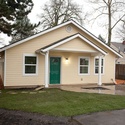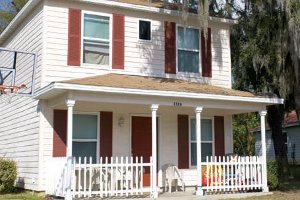
The Bay Area and our neighbor to the north, Portland, Oregon, have had a friendly competition over which of us is the greenest state. Portland scored big points by providing proof positive that the American Recovery and Reinvestment Act (ARRA) a.k.a. the Stimulus Bill, has crated good paying, permanent jobs in the new, greener economy.
The Energy Efficiency and Community Block Grant (EECBG) program, which targets urban settings for energy efficiency building retrofit, economic stimulus, and job creation is a sister program of the Weatherization Assistance Program. Both programs are supported by the Department of Energy. Both programs are on the chopping block in the current House budget. The City of Portland, with the help of Green For All, a national nonprofit organization that works to spread the benefits of the new green economy to every level of the economic hierarchy, was given through EECBG access to $1.1-million for a pilot program to retrofit 500 homes in the Portland area. But the money was not a grant—it is a revolving loan. Portland has leveraged the loan fund with public and private investments to generate to date close to $7-million in homeowner investment.
The results so far:
